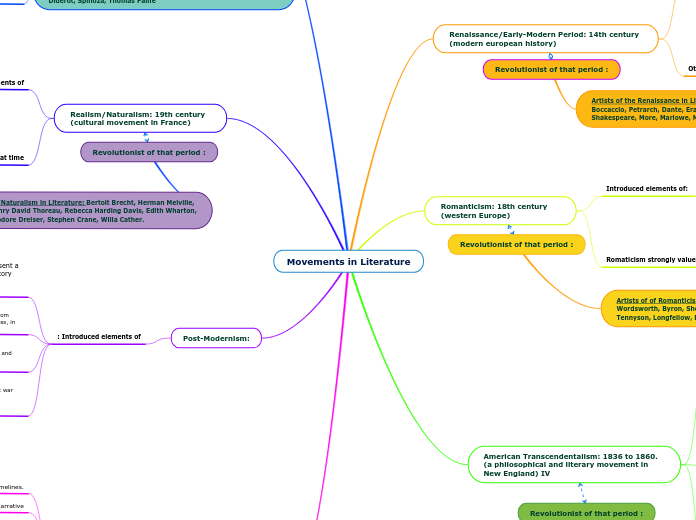af Eliza Rourke 4 år siden
1508
Movements in Literature
The text discusses key literary movements and figures, highlighting the evolution from Realism and Naturalism to Modernism and Postmodernism. It mentions notable authors such as T.S.

af Eliza Rourke 4 år siden
1508

Mere som dette
- Contained papers on art - Music - Literature, mostly German literature; translations from ancient “Oriental Scriptures”; original modern “scriptures” in the form of Alcott’s Orphic Sayings; and finally, a good deal of verse.
The results of these intellectual activities created a revitalization of European culture in general.
Rediscovery of ancient classical texts and learning and their applications in the arts and sciences.
A rebirth of European culture in general
A rebirth of classical learning and knowledge through the rediscovery of ancient texts